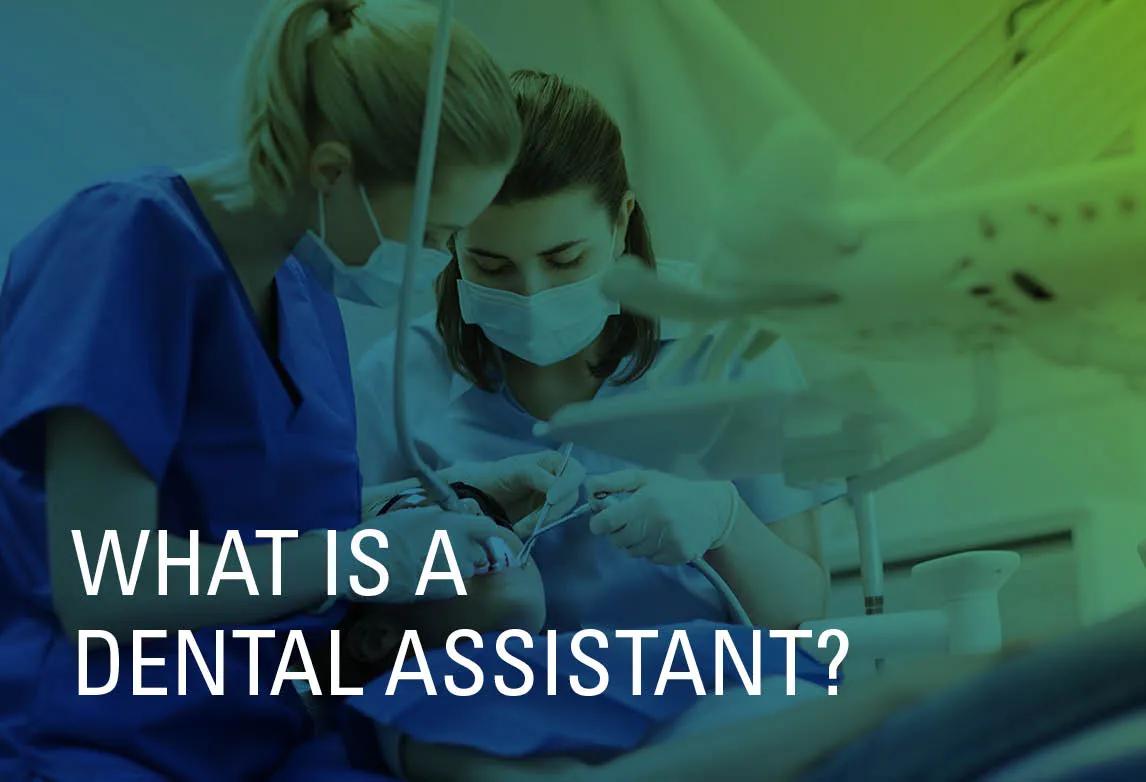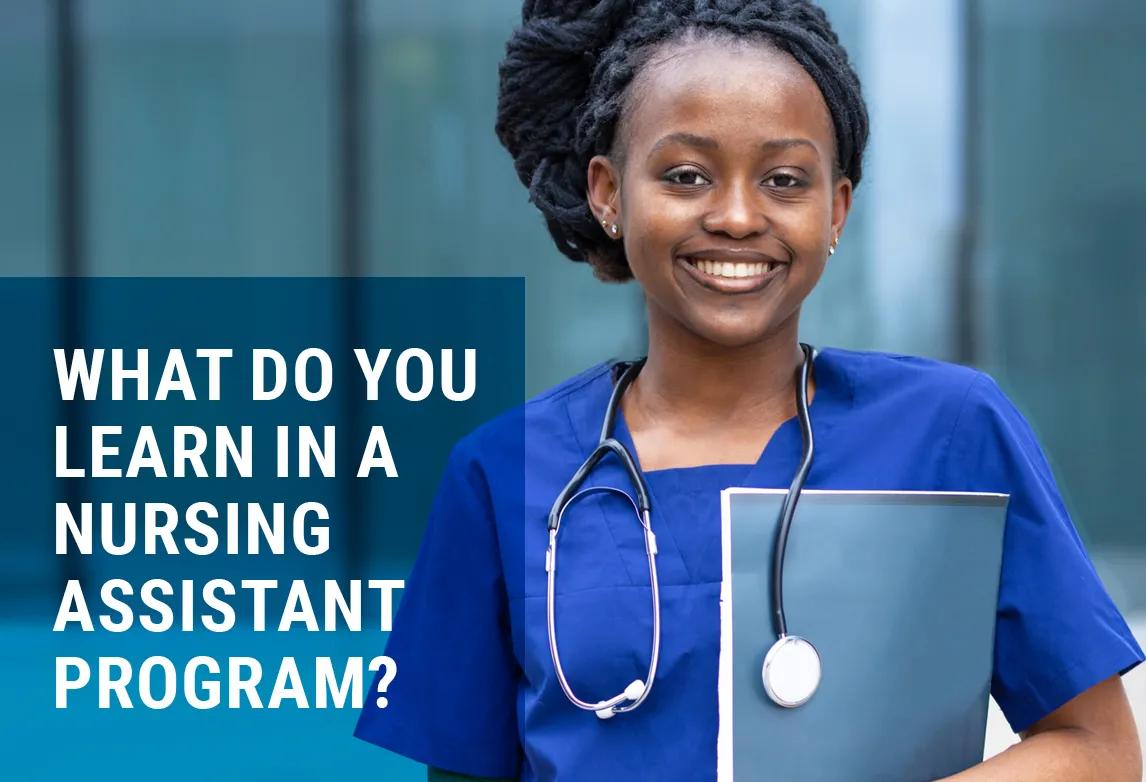Table of contents
Healthcare Careers for Different Learning Styles

Table of Contents
When your natural learning tendencies align with your profession, it can feel like a good fit. Your skills and job duties complement each other, which can help you excel in that role. Here, we outline three common yet different learning styles — visual, auditory, and kinesthetic — and potential healthcare career options for each.
Healthcare Careers for People with a Visual Learning Style
Research indicates that this is the most prevalent learning style among healthcare education students, with 65% utilizing their sense of vision when absorbing information.1 Visual learners take in information best by seeing. Images, diagrams, and other visual aids (like graphs, pictures, and videos) can help them understand and retain important information. Four healthcare careers can be a fit for people with a visual learning style: pharmacy technician, medical biller and coder, health information technician, and healthcare accounting.
Pharmacy Technician
Pharmacy technicians work under the supervision of a licensed pharmacist, assisting them with the dispensing of prescription medications. Pharmacy techs may also perform other duties, such as organizing inventory and assisting patients or pharmacy customers with their insurance claims or other purchases.
Visual learners might enjoy working as a pharmacy technician since this healthcare career relies on identifying different medications based on their color, markings, pill size, and other visual appearances. Being a pharmacy tech also involves understanding human pathophysiology, which is the study of abnormalities or dysfunctions that exist as a result of a particular condition or disease. Some of these abnormal states are visual, such as having skin that is red and swollen.
Visit Ultimate Medical Academy’s (UMA) online2 Health Sciences – Pharmacy Technician Associate of Science / Associate of Applied Science degree program to learn more about this healthcare career and the education it involves.
Study tips for visual learners in pharmacy technician training
If you enroll in pharmacy technician career training, it can help to study pictures of the various medications to help you retain what they look like. Match them with images of potential side effects or drug interactions so your brain can “see” the connection.
When studying anatomy and physiology, use images or models of the various muscles, bones, and organs. Match them to their proper locations within the body by placing pictures in the appropriate place on an outline of a human body. You can also find where they are on your body and look at their location while repeating their names.
During the pharmaceutical calculations portion of your pharmacy tech career training, close your eyes and visualize yourself making these calculations in a real-world setting. In your mind, walk through each step of the process, from the beginning to the end. While visualization may feel silly or seem like a waste of time, some of the top Olympians use this technique to perform their best in their sport of choice.3
Medical Biller and Coder
Another visual learner career in healthcare is that of a medical biller and coder. What is medical billing and coding?
Medical billers help healthcare providers obtain payment for products and services rendered. Medical coders transform patients’ medical information (i.e., diagnoses, tests, and treatments) into standard medical codes to allow for the storage and transfer of information without the use of technical healthcare terminology or complex medical terms. Some healthcare organizations hire each of these positions separately. Others have staff that perform both functions, working as a medical biller and coder.
Medical billing and coding is a visual position because it relies on your ability to search for and find the proper codes when updating patients’ health records. Knowing medical terminology is also important, with many of these terms correlating to various body parts or locations — which, again, is a visual medium.
Visit UMA’s online Medical Billing and Coding diploma and associate degree programs to learn more about this healthcare career and the education it involves.
Study tips for visual learners in medical billing and coding training
Should you decide to pursue medical billing and coding training and have a visual learning style, create a flow chart outlining the steps taken during the billing and coding process. This gives you something to follow visually when learning what you must do next.
During your medical terminology course, create flashcards. Write the terms on the front of the cards and what they mean on the back. Or use digital flashcards if you have access to them. To help better remember certain terms or ideas, use pictures versus words.
Health Information Technician
Health information technicians work in health information management (also sometimes referred to as health information technology). This field refers to the collection, organization, and storage of patients’ private health information, often through the use of electronic health records or EHRs.
What makes becoming a health information technician an option for visual learners? It requires good attention to detail to help ensure that patients’ records are accurate. This is important for healthcare providers tasked with tracking their health status. Correct medical records are also important when submitting claims to the patient’s health insurance company so it knows (and pays) the correct portion of the expense.
Visit UMA’s online2 Health Information Management Associate of Science / Associate of Applied Science degree program to learn more about this healthcare career and the education it involves.
Study tips for visual learners in health information management training
When training to work as a health information technician or other health information management role, you will likely learn how health information records are kept and accessed. To capitalize on your visual learning style, it may be helpful to view a copy of your medical records so you can see some of the things you are learning in your course.
A study published on January 22, 2025, found that 83.7% of Americans have access to their medical records via a patient portal.4 If you haven’t already accessed your information through your healthcare provider, contact their office to ask whether they offer this ability. If they do, follow their instructions to create your account and see what medical health records look like from a patient’s point of view.
Another way to support a visual learning style in health information management training is to highlight important terms, processes, and facts in the course materials. Use different colors for each so you can find the information easily when getting ready for quizzes and tests. If you use digital textbooks, some allow you to do this online.
Healthcare Accounting
It’s often said that in business, it’s important to know your numbers. The “numbers” referred to in this statement include certain data that can help identify the financial health of a business, such as its cash flow, net income, profit and loss, and gross margins.5 A healthcare accounting professional helps businesses in this industry keep track of this type of financial information.
If you are a visual learner who likes to work with numbers, healthcare accounting may be a good fit for you. By providing healthcare facilities and other healthcare organizations the ability to know where they stand financially, they’re better able to make decisions that can help them continue to serve patients for years to come.
Visit UMA’s online Healthcare Accounting Associate of Science / Associate of Applied Science degree program to learn more about this healthcare career and the education it involves.
Study tips for visual learners in healthcare accounting career training
Because healthcare accounting involves collecting and recording financial information, visual learners may benefit from going through similar exercises using their personal financial data. For instance, if during your training you learn about cash flows, create a cash flow sheet for you or your family.
This helps not only recognize where certain data is drawn from but also helps you better understand what type of information these documents can provide. The data is right there in front of you, in black and white, providing a visual reference that you can relate to personally.
Another tip for visual learners during healthcare accounting career training is to use graphics when possible to aid in the studying process. When learning about the reimbursement cycle, draw a circle on a piece of paper and write the steps around it. When learning anatomy, draw an outline of the human body and label the necessary parts. Use images whenever possible to help you retain this information.
Healthcare Careers for Auditory Learners
Auditory learners learn best by listening. Examples of auditory learning include listening to an instructor speak, for instance, or preferring an audio textbook to a textbook available in print. If this sounds like you, two healthcare career paths that could be a fit for auditory learners are health services specialists and healthcare management.
Health and Human Services
Health and human services is a broad field. Though, the individuals working in this field have one common goal: to improve the lives of people as individuals and communities as a whole. Performing this type of service in the health sector sometimes involves connecting clients with allied health services that can improve their quality of life.
One reason health and human services can be a career fit for auditory learners is that this type of position often requires a lot of listening. You can’t fully help clients or communities until you know what the issues are. And you don’t know what the issues are if you don’t listen to their concerns. Auditory learners are naturally skilled at collecting this important information with their ears.
Another reason auditory learners may enjoy a health and human services career is the ability to work with a variety of people. People from different backgrounds often use different terminology or slang, or they might have different tones or dialects. Someone good at picking up on these differences can gain more insight into where a person comes from, even if they don’t say, which also helps provide insight into what services may help them best.
Visit UMA’s online Health and Human Services Associate of Science / Associate of Applied Science degree program to learn more about this healthcare career and the education it involves.
Study tips for auditory learners in health and human services training
Auditory learners can benefit from receiving health and human services career training at an educational institution that offers audio learning materials. This allows you to take in the information you need in a way you may prefer. You can also listen to course materials while doing other somewhat mindless activities, such as running for exercise or cleaning the house.
When studying for quizzes and tests as an auditory learner, institute the help of a friend. Have them verbally ask you questions that may appear on the exam versus studying your notes in writing. You may also record various questions and answers yourself, then play them back to help you better retain the information.
Healthcare Management
Maybe you’re interested in a healthcare role that consists of working with healthcare staff instead of the patients they treat. In this case, you might enjoy a position in healthcare management. Healthcare management includes a wide variety of functions that can help hospitals, doctor’s offices, and other health-based organizations operate more efficiently. Among them are creating budgets, developing forms, and implementing important processes.
What makes a healthcare management career suitable for auditory learners? Managing healthcare organizations involves establishing positive relationships. This can be accomplished by listening to each partner’s concerns and ideas. The better you can understand where each is coming from, the easier it becomes to create workplace solutions designed to meet both parties’ needs.
Visit UMA’s online Healthcare Management Associate of Science / Associate of Applied Science degree program to learn more about this career and the education it involves.
Study tips for auditory learners in healthcare management training
To cater to your auditory learning style while taking healthcare management courses, find a place to study that is free from distractions. The more you limit outside noise while learning about professional communications, accounting systems, and office operations, the easier it can be to focus. Find a place in your house where you can shut a door, such as a bedroom or office.
Also, for materials that are in writing, read them out loud so you can hear them. When you get to pictures or illustrations, talk them out. This is another reason to find a quiet environment. You may be doing a lot of talking to make your materials more memorable. A quiet space makes this type of studying possible.
Healthcare Careers for Kinesthetic Learners
Kinesthetic learners learn by touching or doing. They take in and retain information best with a hands-on approach. An example of kinesthetic learning is taking piano lessons. You can read a book to learn the keys and the order to play them, but true learning occurs when sitting in front of the piano and playing it. The medical assistant and nursing assistant roles are two healthcare careers that could be a fit for learners who enjoy being hands-on.
Medical Assistant
Medical assistants serve a valuable function as they help doctors and other health professionals collect and manage patients’ vital information. This could include taking patients’ blood pressure, drawing their blood for testing, or recording their health history in the office’s recordkeeping system. You may also help medical practitioners when performing exams.
Kinesthetic learners might find a medical assistant position is a good fit because each of these functions involves the use of your hands. You spend your days doing different tasks that require working with patients in a more active way than some of the other healthcare positions we’ve previously discussed.
Visit UMA’s Medical Assistant diploma and Health Sciences – Medical Assistant Associate of Science / Associate of Applied Science degree programs to learn more about this healthcare career and the training it involves.
Study tips for kinesthetic learners in medical assistant training
Should you decide to pursue medical assistant training, you might find it helpful to act out the procedures you learn. For example, when learning how to take a patient’s blood pressure, go through these same steps with a learning partner or friend. Even if you don’t have a cuff or stethoscope, you can still walk through the process to help store it in your memory.
The same goes for other tests, labs, or procedures you need to learn. Get up and walk through them as if you are with an actual patient. Even if you don’t have someone to practice with, you can envision that someone is there. Or grab one of your children’s teddy bears and practice on it. No one says your patients have to be human during your medical assistant career training prep.
Nursing Assistant
Like a medical assistant, a nursing assistant can also take a patient’s vital signs. But they provide additional care as well. This is sometimes referred to as compassionate care and includes helping patients with everyday activities such as those related to hygiene, getting dressed, or eating. Individuals working in these healthcare roles can be found in hospitals, but also in nursing homes, assisted living facilities, and other long-term care facilities.
Kinesthetic learners might enjoy a nursing assistant position because it is so hands-on with patient care. You get to work with patients one-on-one, assisting them with basic duties they may not be able to perform themselves.
Visit UMA’s Nursing Assistant diploma program to learn more about this healthcare career and the training it involves.
Study tips for kinesthetic learners in nursing assistant training
What can you do to make the most of your nursing assistant career training if you are a kinesthetic learner? One option is to practice what you’re learning as much as possible. Ask family members and friends to be your patients and assist them with the duties you’re learning in your studies.
It’s also helpful to choose a nursing assistant career training program that offers a clinical externship. During an externship, you have the opportunity to work with patients in an actual healthcare setting. This is a helpful setup for a kinesthetic learner as you can practice your skills in a real-world healthcare environment.
Choosing the Healthcare Career for You
There’s a healthcare job for people with each of the different learning styles. The first step is to identify which learning style you have, and then look for a career that best matches that style. (Or you can pick a career that you’re simply passionate about, even if it doesn’t fit your learning style as this is by no means a requirement!)
These are just a few ideas to consider. If you’re still unsure which healthcare career might be a good fit for you, UMA has a variety of programs and degrees from which to choose for the healthcare field.
We also offer a short (and fun) Healthcare Career Quiz. Take it and see what it says. You may be surprised or be presented with an option you hadn’t previously considered. You can also contact us and we can talk about your options, helping you pick one that aligns with your strengths and career goals.
FAQs
What are the different types of learning styles?
There are several, with some common ones being visual, auditory, and kinesthetic. Others include being a reading/writing learner, logical learner, social learner, solitary learner, or naturalistic learner.
What’s the importance of knowing your learning style?
Understanding the way you learn best can help you choose a career that aligns with your natural tendencies. It can also help you create a study routine that utilizes your learning style, such as using pictures if you’re a visual learner.6
How do I find out my learning style?
To identify your primary learning style, consider your preferences, how you study now, and prior learning experiences.7 You can also take an online learning style assessment to better understand how you may learn best.
What if I have more than one learning style?
If you have learning preferences that fall into multiple different styles, this is often referred to as being a multimodal learner. You might like to read textbooks (visual) and listen to lectures (auditory), for example. As long as you learn from both, they can each be a positive addition to your study routine and a contributing factor to your career choice.
1 Eslamian M. Learning Styles and Teaching Preferences of Medical Students: Insights for Effective Medical Education. Med Educ Bull. https://www.medicaleducation-bulletin.ir/article_211875_1115865bc23a9da4dfd32d99bfa77a3c.pdf
2 Coursework is online except for an on-site externship/practicum in select programs.
3 Olympics.com. The secret to track & field success: Visualisation and manifestation. https://www.olympics.com/en/news/secret-to-track-field-success-visualisation-manifestation
4 Shah A, Fiala M.A. Disparities in Access and Utilization of Electronic Health Record Patient Portals. J Gen Intern Med. https://pubmed.ncbi.nlm.nih.gov/39843664/
5 Bawden-Davis J. Financial Terms in Business. American Express. https://www.americanexpress.com/en-us/business/trends-and-insights/articles/the-7-financial-numbers-every-business-owner-should-know/
6 Herrity J. 8 Common Types of Learning Styles. Indeed Career Guide. https://www.indeed.com/career-advice/career-development/types-of-learning
7 Indeed Career Guide. “What Is My Learning Style?” (Practical Guide with Tips). https://ca.indeed.com/career-advice/career-development/what-is-my-learning-style
Request Information
Talk with us. Start your journey.
Complete this form and we'll call you to explore options at UMA and answer your questions. We'll also email you info on how to get started. We're with you at every step!
Request Information
Talk with us. Start your journey.
Complete this form and we'll call you to explore options at UMA and answer your questions. We'll also email you info on how to get started. We're with you at every step!
About the Author
 Adam Fenster
Adam FensterAdam Fenster is a senior copywriter at Ultimate Medical Academy, with journalism experience from his time as a reporter and editor for multiple online and print publications. Adam has been covering healthcare education since 2019, with an emphasis on topics such as wellness, healthcare employment, and job preparedness. He received his BA in journalism from the University of South Florida.
Related Content


